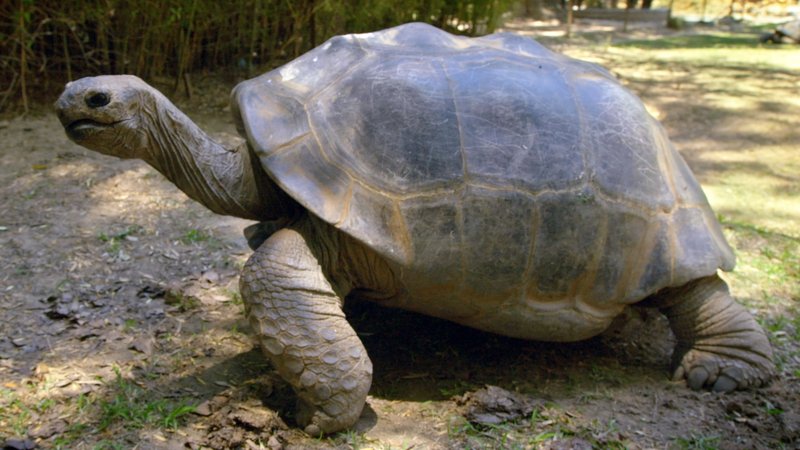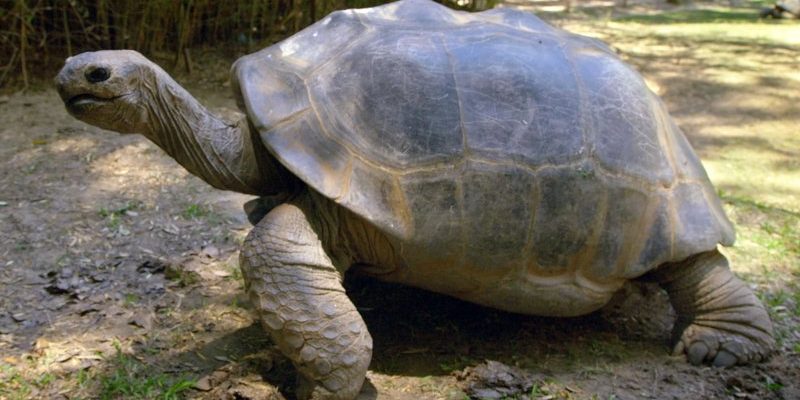
Just picture yourself on a tropical island, surrounded by lush vegetation, where time seems to stand still. That’s the world of the Aldabra giant tortoise, where these gentle giants slowly roam, munching on grass and leaves. If you’re curious to know more about these fascinating reptiles, you’re in the right place! Let’s dive into ten amazing facts that showcase why the Aldabra giant tortoise has captured the hearts of so many.
1. A Massive Size
One of the most striking features of the Aldabra giant tortoise is its size. These tortoises can weigh between 150 to 250 kilograms (that’s around 330 to 550 pounds!) and have shells that can reach over 1 meter (about 3 feet) in length. When you see one up close, it’s hard to believe that such a gigantic creature can be so gentle.
Their size not only makes them stand out but also plays a crucial role in their survival. Being large helps them store more fat and water, allowing them to withstand long periods without food or water. It’s like having a built-in survival kit! Imagine having a fridge full of snacks, but instead of ice cream and leftovers, it’s pure energy for the tortoises.
2. A Unique Habitat
The Aldabra giant tortoise calls the Aldabra Atoll its home, which is part of the Seychelles islands. This remote area is a UNESCO World Heritage site, renowned for its breathtaking biodiversity. The atoll is surrounded by beautiful coral reefs, mangroves, and lush greenery, making it a paradise for various wildlife.
Interestingly, the isolation of Aldabra Atoll has led to a unique ecosystem where these tortoises thrive. They have adapted beautifully to their environment, munching on native plants like grass, leaves, and shrubs. It’s like their very own buffet! The habitat plays a significant role in their diet and overall health, proving that home is where the food is.
3. Longevity: Nature’s Timeless Wonder
Aldabra giant tortoises are famous for their incredible lifespan, often living over 100 years! In fact, some individuals have been known to live well beyond that. It’s almost as if they have a secret formula for longevity.
But what contributes to their long life? It turns out that their slow metabolism and low-stress lifestyle might be key factors. Picture living in a world where you take your time with everything—eating, walking, and even napping. It’s no surprise these tortoises can enjoy life for so many years. Just imagine celebrating your one-hundredth birthday with a nice, slow stroll through the landscape!
4. Shells: More Than Just Protection
The Aldabra giant tortoise’s shell is not only a protective shield but also a fascinating feature of its biology. The shell is made of keratin, the same material found in our nails and hair, and is designed to withstand the harsh conditions of their habitat.
But their shells are more than just tough armor. They also play a crucial role in thermoregulation—helping the tortoises regulate their body temperature. When it’s hot, they can tuck their heads and limbs inside their shell to avoid overheating. Imagine having a cozy portable home that doubles as a sun shield!
5. Social Creatures with Personalities
You might think of tortoises as solitary creatures, but Aldabra giant tortoises are quite social. They often interact with one another and can form bonds. These interactions can be a mix of friendly nudges and gentle head-butting.
Interestingly, each tortoise has its own personality. Some are more curious and adventurous, while others prefer a calm, laid-back life. It’s like a mini-community where each tortoise has its own quirks and preferences. Just picture a lively gathering of tortoises chatting, sharing food, and enjoying each other’s company in their serene environment.
6. A Diet of Delight
Feasting on a variety of plants, Aldabra giant tortoises have a mostly herbivorous diet. They munch on grasses, leaves, fruits, and flowers, which provides them with the necessary nutrients. Their eating habits have a significant impact on the environment too—by consuming specific plants, they help maintain the balance in their ecosystem.
What’s really fascinating is how they help spread seeds through their dung, aiding in plant growth. It’s like they’re nature’s gardeners, shaping their habitat with every meal. Imagine the satisfaction of knowing you’re contributing to your environment just by enjoying a good meal!
7. Threats and Conservation Efforts
Like many species, the Aldabra giant tortoise faces threats, primarily from human activities. Although they are currently not endangered, habitat destruction and climate change pose risks to their survival. Conservation efforts are underway to ensure these magnificent creatures continue to thrive.
The Seychelles government has implemented measures to protect their habitats and monitor the tortoise population. Organizations are also working on raising awareness about the importance of these tortoises and their role in the ecosystem. It’s a team effort—think of it as a global community coming together to protect these living treasures.
8. A Symbol of Resilience
The Aldabra giant tortoise isn’t just a creature; it’s a symbol of resilience and survival. Over the years, they’ve adapted to changing environments and continue to thrive despite various challenges. This adaptability teaches us about the importance of conservation and caring for our planet.
When you observe these tortoises, you can’t help but feel inspired by their slow yet determined approach to life. They embody the idea that sometimes, taking things slow can lead to extraordinary results. So, the next time you feel overwhelmed, just remember the tortoises and their patient path through life.
9. Cultural Significance
Throughout history, the Aldabra giant tortoise has held cultural significance in the Seychelles and beyond. Many local stories and folklore feature these tortoises, celebrating their strength and longevity. They have become symbols of wisdom and endurance.
Their presence has also inspired art and handicrafts in the Seychelles. You’ll find beautiful carvings and souvenirs that honor these majestic creatures, showcasing the deep connection between the tortoises and the islanders. It’s like carrying a piece of nature’s wonder with you wherever you go.
10. A Gateway to Ecosystem Health
Aldabra giant tortoises serve as important indicators of ecosystem health. As a keystone species, their well-being reflects the overall condition of their habitat. If they’re thriving, it’s a good sign that the ecosystem is in balance; if not, it points to potential environmental issues.
This relationship highlights the interconnectedness of all living beings. By protecting these tortoises, we’re not just preserving one species but also ensuring the health of countless others in their ecosystem. Think of it this way: by caring for the tortoises, we’re caring for the entire environment.
In conclusion, the Aldabra giant tortoise is more than just a fascinating creature; it’s a vital part of our world. From their impressive size to their rich history and cultural significance, they remind us of the beauty and complexity of nature. So, next time you think of these gentle giants, remember their incredible journey and the lessons they offer about resilience, conservation, and community.

